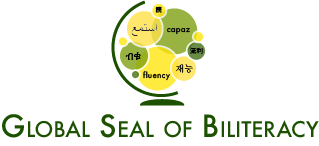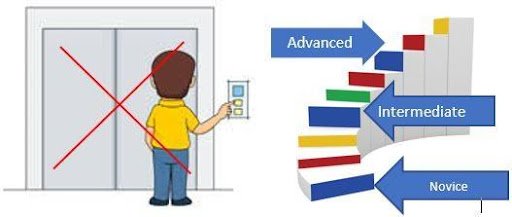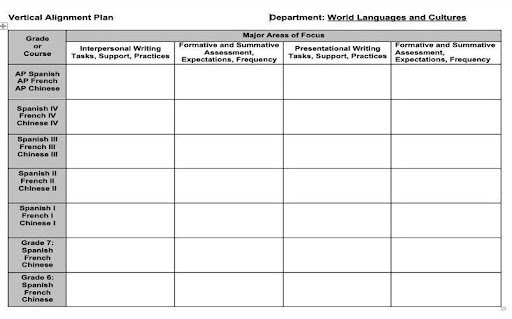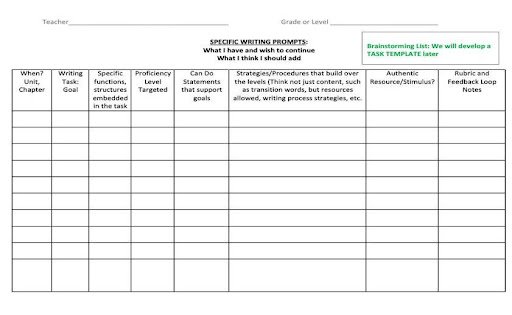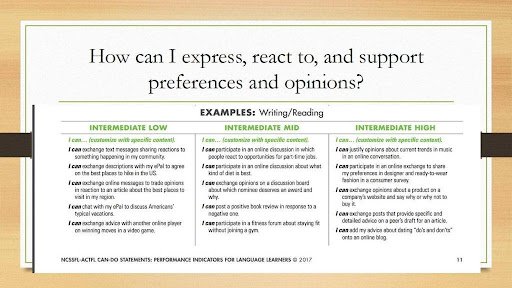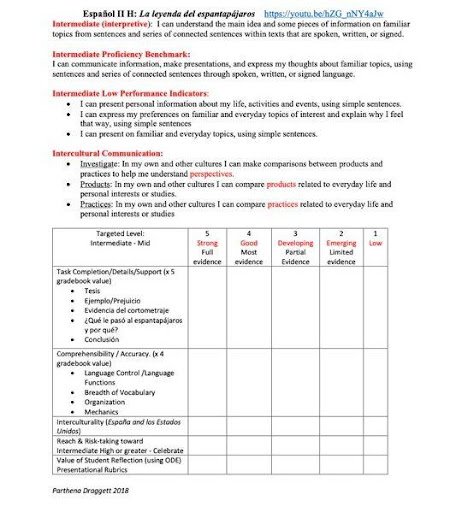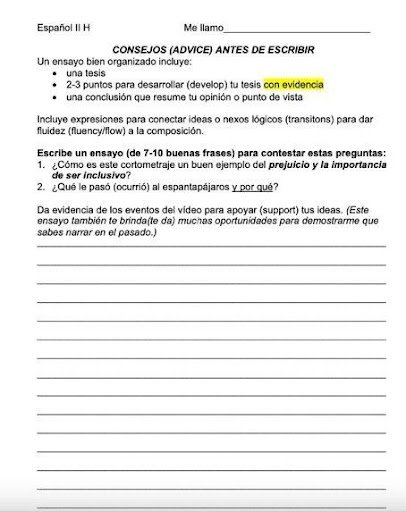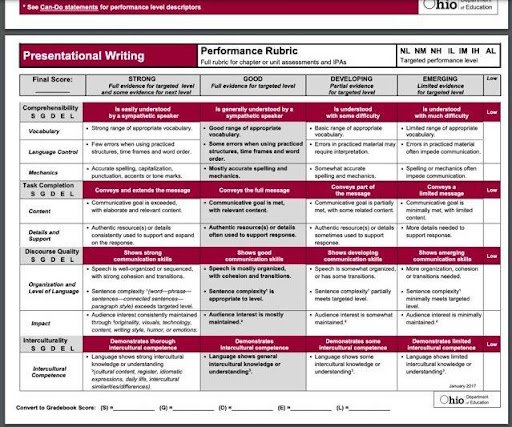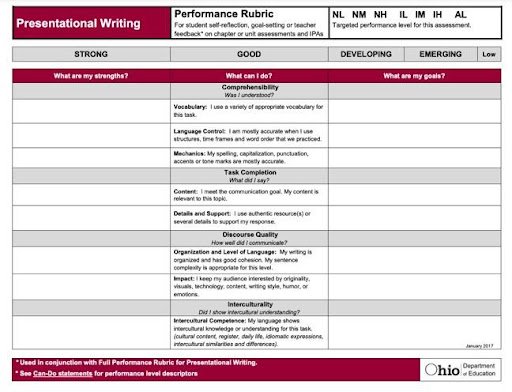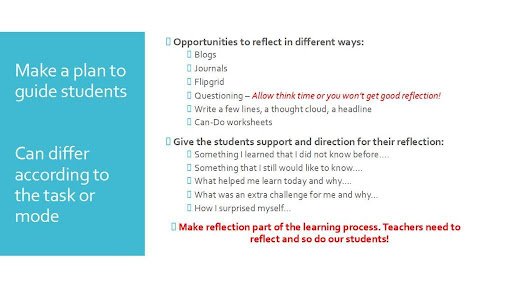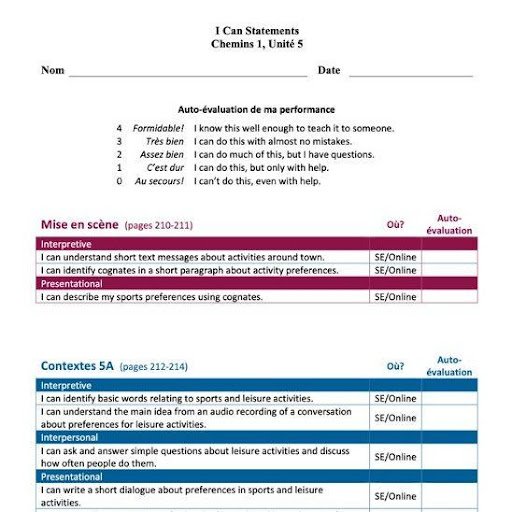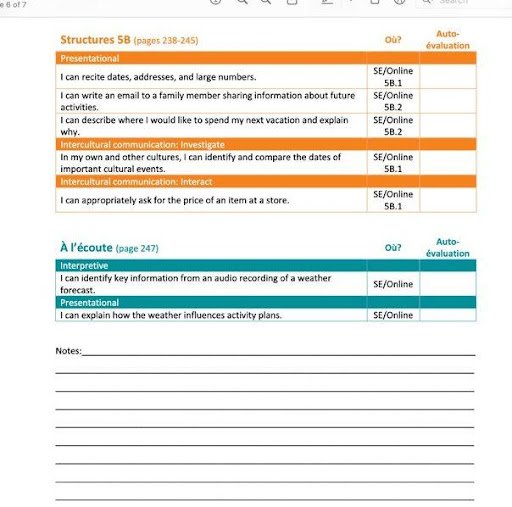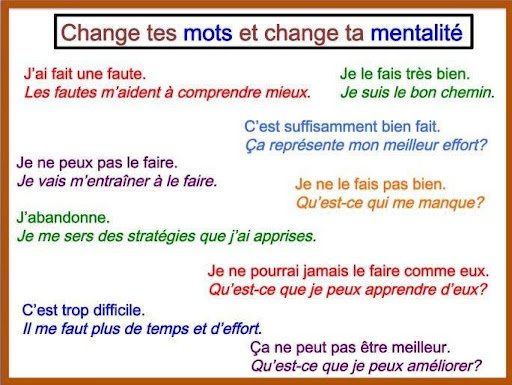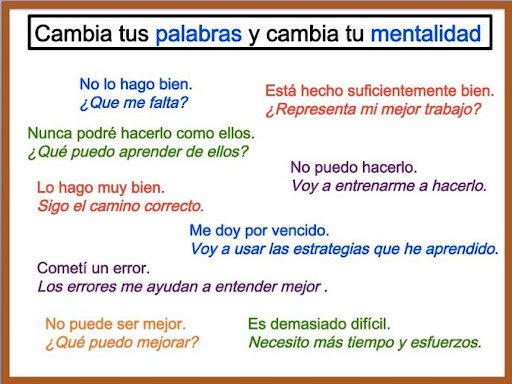Global Y-C.R.E.D. 2023 Sponsored Blog Post by Vista Higher Learning
Proficiency in writing: How do we build skills that lead our students to communicate through writing, both in the interpersonal and presentational modes? What do students write about and how do we inspire them to want to write? And how do we make sure that they are “climbing the stairs” to proficiency as they go, building both depth of content and also the quality of their language? We want our students to find joy in their written expression, in what I love to call “the wonderful world of writing.”
I have worked my entire career finding ways to help students achieve greater proficiency, both as a classroom teacher of French and Spanish and as a department chair charged with curriculum development for all languages. It is clear that the key to student success lies in building a shared vision through vertical articulation and alignment. I have personally seen how these two superpowers lead to super teaching, with more proficient and engaged students, and build a well-aligned department that other schools ask to visit so they can find out “how they do it!”
My story: Many years ago, I established an AP Spanish Language and Culture program, but in my first year, I soon realized that my students had not all had the same preparation for the expectations of the course and exam they would take in May. Students fed into AP from three different level four teachers—all excellent, dedicated teachers. The same was true for the first three levels of Spanish. My colleagues and I were all working hard; we even had curriculum maps for articulation, but we were not all getting students where they needed to be in all skills. It became clear that we may have been aligned in WHAT to teach, but not in HOW to get there. So, we set out to make changes, collaborate much more, and establish common practices and strategies, common planning time, even common assessments at all levels. What a difference that process made! With our shared vision, articulation, and alignment, AP Spanish students were all passing the exam. And what was even more relevant to our goals: Students at all levels were demonstrating greater communicative proficiency.
The joy that teachers and students share when teaching and learning is seamless, well-articulated, and scaffolded is tremendous!
So how do we get there and, to stay focused on the topic at hand?
Fortunately, we have come a long way in language pedagogy and find ourselves at truly the best time in the teaching of world languages and cultures. Among all the great guiding documents and principles at our fingertips are the ACTFL World-Readiness Standards for Learning Languages, NCSSFL-ACTFL Can-Do Statements, ACTFL Performance Descriptors for Language Learners, ACTFL Proficiency Guidelines, and the ACTFL Core Practices, all there to help us find a better way to teach.
Thankfully, gone is the drill-and-kill grammar translation methodology that was prevalent when I entered the classroom more than forty years ago, when we didn’t even have standards. Just imagine! Add to all the above tools the great textbooks we have today with their focus on authentic resources, student-produced communication, real-life tasks, and interculturality and … We have all that we need, right? Well, kind of ….
We all know that developing language communication skills is a process and that there is no elevator from novice to advanced proficiency or beyond, right? Students have to take the stairs to get there, one step at a time, perhaps tripping at times, but still forging upward. This is where the pedagogue—the teacher—digs in, scaffolding the experience for students, helping support them and cheering them on.
One thing I learned early on is that there is not one fit, one strategy, one way to reach all students. Students grow their proficiency based on their previous experiences and how they are inspired, engaged, motivated, and encouraged. There may be some who seem to skip up the stairs, while others struggle and are out of breath. That is our job as teachers: to know our students’ learning styles, challenges, and strengths, and to facilitate their journey up the proficiency staircase.
First of all, engage the entire professional learning community—the teacher and the department as a whole— in the process and in your common vision—the articulation of what to teach and when; essentially horizontal and vertical content expectations. Most departments have the what well established through curriculum mapping. But it is alignment of the how, the learning process that brings it all together, the nuts and bolts, that really guides students seamlessly through the learning process. It is through the teacher—YOU, the superhero—that the learning process comes to life, making sure that all students are valued and have access to learning!
Let’s take a look at some best practices involved in vertical alignment that bring it all together to build effective writing skills, which is the focus of my webinar. These are meant to be shared strategies that build and develop from level to level:
1.
Plan with the end in mind, knowing the highest proficiency level targeted, establishing a department plan, spiraling from level to level, scaffolding writing prompts for interpersonal and presentational writing tasks, along with how often to assess, and how you will evaluate with department rubrics.
Revisit your plan at least twice a year, making sure that there are no gaps, repetitions, or omissions, and that your expectations are reasonable, not only for the students, but for you as well, adjusting as necessary. This is a working, living plan, and all teachers have input.
Examples:
2.
Focus on skills and language functions, not content or grammar. It is much more meaningful to tell students that they will be able to “offer advice and give recommendations to a friend who has a problem at home” than to tell them that they will learn how to use the subjunctive!
3.
Use Can-Do statements to help students understand proficiency, writing functions, and goals, and to make writing tasks relevant to real life.
4.
Develop appropriate writing tasks, giving choices and options wherever possible. Consider the proficiency level targeted and students’ interests, as well as the purpose of the task. Offer variety and engaging formats and types of writing: blogs, email messages, essays, advertisements, texts/texting, reviews, fiction, and poetry, for example. We will explore examples during the webinar.
5.
Provide task guidelines and expectations for students, using authentic resources as stimuli wherever possible. Develop these as a team with same-level colleagues.
6.
Model language functions and provide scaffolding support: sentence starters and transitions, progressing from one level to the next. Remember those steps that students are climbing!
7.
Build in lots of formative assessment, offering great feedback and the opportunity to see growth. Learn to use rubrics that inform students and train using them together, evaluating each other’s students to align your thinking. Put equal weight on the content/task, and on language use. Design your department writing rubrics based on standards, AP or IB rubrics, or check out the many others available for performance and proficiency at various state sites. I love using these from the Ohio Department of Education, which allow for student reflection on the flip side:
8.
Provide effective, constructive feedback, keeping it positive and encouraging. Find ways to celebrate and point out what students do well, offering corrections and suggestions for improvement that inspire them to keep writing. In addition to helping with needed areas of improvement, don’t forget to add caring, personalized comments like, “I love the way you describe your day and the details that help me know your favorite activities.”
9.
Engage students in the learning process, using reflection and goal-setting to make a plan for leveling up. Besides the example above, consider guiding student reflection with some of the ideas below:
Always ask students to reflect and offer explanations. You can use Can-Do statements for reflection as well. These can often be found in your textbook. Here are some examples from Vista Higher Learning’s Chemins program:
10.
Make learning joyful! Encourage risk-taking and celebrate errors as a necessary role in the learning process. Use growth mindset to help with social emotional learning. Turn every negative into a positive! Build confidence and you will marvel at what students can do!
https://wlclassroom.com/tag/metacognition
11.
Enjoy and celebrate the role you play in shaping student communication and interculturality. I say this often and I mean it sincerely: There is no better time to be a world language teacher! I wish I were starting my career today with all that we have at our fingertips and how well-aligned we are across the profession! As Henry Ford said, “Coming together is a beginning. Keeping together is progress. Working together is success.”
By Parthena Draggett
Watch the recording of Parthena Draggett’s webinar, Superpowers for Building Writing Proficiency: Articulation and Alignment on Vista’s professional development channel.
